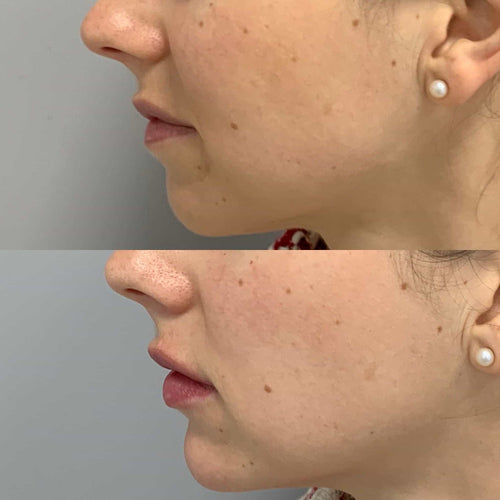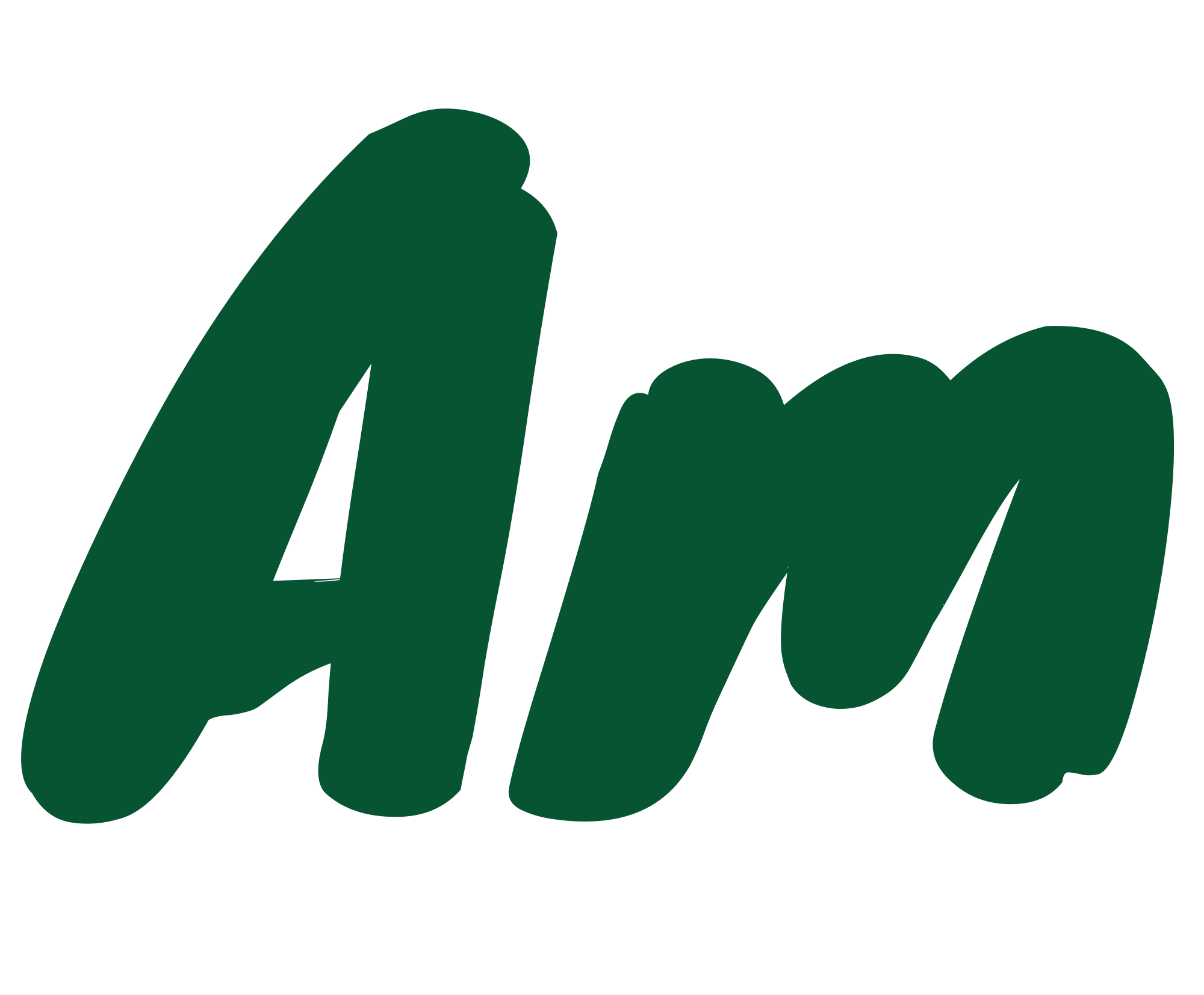How Do You Fill Nasolabial Folds Naturally?
Book a Consultation for Dermal Fillers at It’s Me and You Clinic with Dr. Laura Geige
Lifestyle Changes
Hydration
Reserve a Dermal Filler Appointment with Dr. Laura Geige Now
Nasolabial folds, those creases that run from the sides of the nose to the corners of the mouth, are a natural part of aging. As we age, our skin loses collagen and elasticity, causing these folds to become more prominent.

While some people embrace these lines as a sign of experience, others seek ways to minimize their appearance. It’s important to note that completely erasing nasolabial folds might not be achievable or desirable, but certain lifestyle changes and practices can help soften them and improve skin health.
One crucial aspect is hydration. Drinking plenty of water throughout the day keeps your skin plump and elastic. Dehydrated skin accentuates wrinkles and folds, so ensuring adequate fluid intake can make a noticeable difference.
Another key lifestyle change is maintaining a healthy diet rich in antioxidants. Fruits, vegetables, and whole grains are packed with nutrients that protect your skin from damage caused by free radicals. Antioxidants help to boost collagen production, which is essential for firm, youthful-looking skin.
Regular exercise also benefits your skin. Physical activity increases blood flow, delivering oxygen and nutrients to the skin cells, promoting a healthy glow and improving elasticity.
Getting enough sleep is another important factor. During sleep, the body repairs and regenerates tissue, including skin cells. Aim for 7-9 hours of quality sleep each night to allow your skin to rejuvenate.
Protecting your skin from the sun is paramount. Ultraviolet radiation damages collagen and elastin fibers, contributing to wrinkles and folds. Always wear broad-spectrum sunscreen with an SPF of 30 or higher, even on cloudy days.
Healthy Diet
Nasolabial folds, those lines that run from the base of your nose to the corners of your mouth, are a natural part of aging. As we age, our skin loses elasticity and collagen, which causes these folds to become more pronounced.
While cosmetic procedures like fillers can temporarily plump up the area, there are also lifestyle changes and dietary adjustments that can help minimize their appearance naturally.
**Hydration is Key:** Drinking plenty of water keeps your skin hydrated and plump, making fine lines and wrinkles less noticeable. Aim for eight glasses a day.
Eat a Collagen-Boosting Diet: Collagen provides structure to skin. Incorporate foods rich in vitamin C (citrus fruits, berries, bell peppers) as it’s essential for collagen production. Also include bone broth, which is a natural source of collagen.
Protect Your Skin from the Sun:** UV rays damage collagen and elastin fibers. Wear sunscreen with an SPF of 30 or higher daily, even on cloudy days.
**Healthy Fats are Your Friend:** Omega-3 fatty acids found in fatty fish (salmon, mackerel), walnuts, and flaxseeds can help improve skin elasticity.
Manage Stress:** Chronic stress contributes to inflammation and collagen breakdown. Practice relaxation techniques like yoga, meditation, or deep breathing exercises.
**Get Enough Sleep:** During sleep, your body repairs itself, including skin cells. Aim for 7-8 hours of quality sleep each night.
**Facial Exercises:** Some facial exercises can help strengthen the muscles around your mouth and nose, potentially reducing the appearance of nasolabial folds over time.
**Consistency is Crucial:** Remember that these lifestyle changes won’t erase nasolabial folds overnight. It takes time for your skin to regenerate and show results. Be patient and consistent with your healthy habits.
Sun Protection
Nasolabial folds are creases that run from the sides of your nose to the corners of your mouth. They’re a natural part of aging, as skin loses collagen and elasticity over time. While they can’t be completely eliminated, certain lifestyle changes and sun protection practices can help minimize their appearance.
One key factor in reducing nasolabial folds is maintaining good hydration. Drinking plenty of water keeps your skin plump and hydrated, helping to fill out wrinkles and fine lines. Eating a healthy diet rich in fruits, vegetables, and lean protein also provides essential nutrients for skin health.
Sun exposure is a major contributor to premature aging and the deepening of nasolabial folds. Ultraviolet (UV) rays break down collagen and elastin, the proteins responsible for skin firmness. Protecting your skin from the sun’s harmful rays is crucial. Always apply a broad-spectrum sunscreen with an SPF of 30 or higher daily, even on cloudy days.
Wearing a wide-brimmed hat can provide additional shade to your face and reduce UV exposure. Avoid prolonged sun exposure during peak hours (10am to 4pm) when the sun’s rays are strongest.
Smoking also damages collagen and elastin, accelerating skin aging and deepening nasolabial folds. Quitting smoking is one of the best things you can do for your skin health.
While lifestyle changes can help improve the appearance of nasolabial folds, some individuals may consider cosmetic treatments such as dermal fillers or laser therapy to further minimize their appearance.
Injectable Treatments
Dermal Fillers
Nasolabial folds, those lines that run from the sides of your nose to the corners of your mouth, are a natural part of aging.
As we age, our skin loses collagen and elasticity, causing the fat pads beneath the skin to descend. This can lead to more prominent nasolabial folds.
While there are surgical options available for treating nasolabial folds, injectable treatments have become increasingly popular due to their non-invasive nature and relatively quick recovery time.
Here’s a breakdown of injectable treatments commonly used to fill nasolabial folds:
- Dermal Fillers:
These gel-like substances are injected into the skin to add volume and smooth out wrinkles. Hyaluronic acid fillers are the most popular type, as they are naturally occurring in the body and provide a temporary solution that typically lasts 6-18 months.
- Botox:**
While primarily known for treating wrinkles by relaxing muscles, Botox can also be used to lift the corners of the mouth, which can indirectly minimize the appearance of nasolabial folds.
Choosing the best treatment option depends on several factors, including the severity of the folds, desired results, and individual skin type. Consulting with a qualified and experienced injector is crucial to ensure safe and effective treatment.
Let’s delve deeper into the benefits and considerations of dermal fillers for nasolabial fold correction:
- Benefits:
• **Immediate Results:** Dermal fillers provide instant gratification, with visible improvements right after the injection.
• **Natural-Looking Enhancement:** Experienced injectors can subtly restore volume and create a smoother appearance without looking overly plump or artificial.
• **Minimal Downtime:** Most people can resume their normal activities immediately after treatment, with only minimal swelling or bruising.
- Considerations:
Get Started with Dermal Fillers – Book with Dr. Laura Geige
• **Temporary Results:** The effects of hyaluronic acid fillers typically last 6-18 months and require repeat treatments to maintain the desired outcome.
• **Potential Side Effects:** Common side effects include redness, swelling, bruising, and tenderness at the injection site. These usually subside within a few days.
• Individual Variability:** Results can vary depending on factors like skin thickness, age, and the specific filler used.
Botox
Nasolabial folds, those lines that run from the sides of your nose to the corners of your mouth, are a common concern as we age. While lifestyle factors like smoking and sun exposure can contribute to their appearance, gravity and natural collagen loss play a significant role.
Injectable treatments offer a popular solution for minimizing nasolabial folds and restoring a smoother, more youthful appearance.
Here’s a breakdown of common injectable options:
-
Dermal Fillers: These gel-like substances are injected directly into the nasolabial folds to plump them up and smooth out wrinkles.
-
Hyaluronic Acid (HA) fillers, such as Juvederm and Restylane, are popular choices due to their natural presence in the body, making them biocompatible and readily absorbed.
-
Calcium Hydroxylapatite (Radiesse) offers a longer-lasting effect than HA fillers and can also stimulate collagen production.
-
Botox: While primarily known for smoothing forehead wrinkles, Botox can also be used strategically to relax the muscles that contribute to nasolabial fold deepening. By reducing muscle movement, Botox can prevent further accentuation of these lines.
Choosing the right injectable treatment depends on individual factors such as the depth and severity of the nasolabial folds, desired outcome, and budget.
A consultation with a qualified dermatologist or plastic surgeon is crucial to determine the most suitable option and create a personalized treatment plan.
Minimally Invasive Procedures
Radiofrequency Skin Tightening
Minimally invasive procedures offer a range of options for addressing various cosmetic concerns, including nasolabial folds, without requiring extensive surgery or lengthy recovery times. Radiofrequency skin tightening stands out as one such technique that can effectively target and improve the appearance of these lines.
Nasolabial folds are creases that run from the sides of the nose to the corners of the mouth, often deepening with age due to a combination of collagen loss and facial muscle weakening.
Radiofrequency (RF) skin tightening utilizes radio waves to generate heat within the deeper layers of the skin. This targeted heating stimulates collagen production and encourages tissue remodeling.
During a RF treatment for nasolabial folds, a specialized device emits radiofrequency energy through handpieces that are gently placed on the targeted area. The heat generated by the RF energy triggers fibroblasts, cells responsible for producing collagen, to increase their activity.
As new collagen fibers form and existing ones tighten, the skin gradually lifts and firms, reducing the depth and prominence of nasolabial folds.
Benefits of radiofrequency skin tightening for nasolabial folds include:
– Non-surgical approach: No incisions or needles are required, minimizing downtime and risk.
– Gradual and natural results: RF treatment stimulates gradual collagen production, leading to a more subtle and youthful appearance over time.
– Minimal discomfort: Most patients experience only mild warmth or tingling during the procedure.
– Versatile: RF skin tightening can be used on other areas of the face and body as well.
While radiofrequency skin tightening is generally safe, it’s important to consult with a qualified and experienced practitioner to determine if it’s right for you. They will assess your individual needs and skin condition to recommend the appropriate treatment plan.
Laser Resurfacing
Minimally invasive procedures are cosmetic treatments that use small incisions and specialized tools to address aesthetic concerns with less downtime and scarring compared to traditional surgery.
Nasolabial folds, commonly known as laugh lines or parentheses lines, are the creases that run from the bottom of your nose to the corners of your mouth.
As we age, these folds become more prominent due to a loss of facial volume, thinning skin, and changes in facial muscle structure.
Laser resurfacing is a minimally invasive procedure that utilizes laser energy to remove the top layers of damaged skin, stimulating collagen production and revealing smoother, rejuvenated skin.
There are two main types of laser resurfacing: ablative and non-ablative.
Ablative lasers remove a deeper layer of skin, resulting in more dramatic results but requiring longer recovery time.
Non-ablative lasers target the underlying tissue without removing the outer layer of skin, leading to less downtime and a more gradual improvement.
For nasolabial folds, laser resurfacing can help improve their appearance by:
– Smoothing out wrinkles and fine lines
– Stimulating collagen production for improved skin elasticity and volume
– Tightening the skin around the nose and mouth
It’s important to note that laser resurfacing may not completely eliminate nasolabial folds, especially in more severe cases.
In some instances, a combination of treatments, such as fillers or Botox, may be recommended for optimal results.
Let me know if you would like more details on any specific aspect of minimally invasive procedures or laser resurfacing!
Yummalicious Food Emily Patricia Fae Melissa Neufeld Apples and Pears Co. Alabama Sig Delt
- How Long For Lip Filler Bruising To Go Away - August 21, 2025
- How Long Does Bruising Last On Lip Filler - August 18, 2025
- How Long Do Kratom Gold Shots Last? Effects And Duration Explained - August 15, 2025
